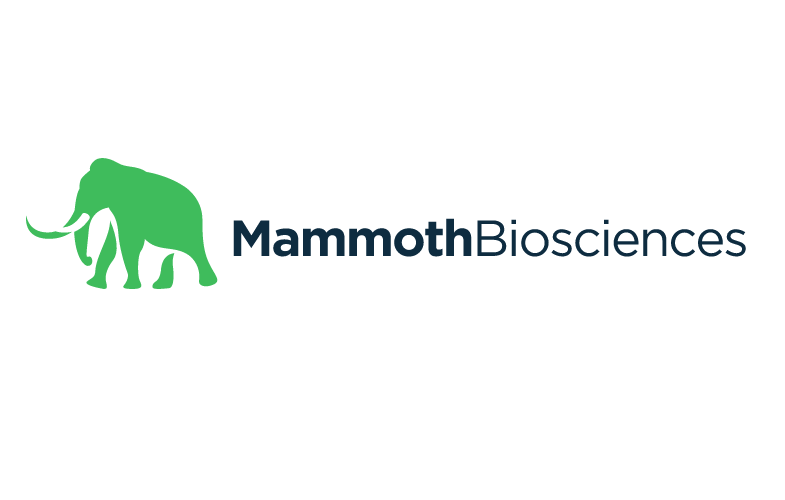Mammoth Biosciences Stock: The Next CRISPR IPO?
This page contains links to our partners. We may be compensated when a link is clicked. Read the disclosures to learn more.

Explore ways to buy Mammoth Biosciences stock as the IPO approaches.
Table of Contents
Notable Mammoth Biosciences News
04/25/2024: Regeneron to collaborate on gene therapies with Mammoth
11/18/2022: How Mammoth is chasing CRISPR 2.0 with scissors
03/12/2022: The 30-year-old female founder at the forefront of CRISPR
09/27/2021: What Drives Crispr Unicorn Mammoth Biosciences
09/09/2021: Mammoth Biosciences Gains Unicorn Status
About Mammoth Biosciences
Mammoth Biosciences is a diagnostics and therapeutics company aiming to discover novel CRISPR technologies to identify, treat, and cure diseases.
CRISPR is an acronym for clustered, regularly interspaced short palindromic repeats.
Scientists can use CRISPR technology to edit the DNA of organisms, including humans.
CRISPR promises the potential to cure hundreds of rare genetic diseases and disorders, such as sickle-cell anemia, organ transplants, diabetes, cancer, and congenital eye diseases.
Mammoth Biosciences was co-founded by Jennifer Doudna, Janice Chen, Lucas Harrington, and Trevor Martin. While Martin was a biology Ph.D. at Stanford, he was intrigued by a paper written by Doudna and emailed her. She connected him with researchers Chen and Harrington at Cal Berkeley.
Doudna received the Nobel Prize in Chemistry in 2020 “for the development of a method for genome editing.”
The company is based in Brisbane, CA, just south of San Francisco. Its name is a tongue-in-cheek reference to the potential for CRISPR technology to de-extinct the woolly mammoth.
Colossal Biosciences, another private startup, is actually planning to use CRISPR to de-extinct the woolly mammoth.
Here’s an interview with Mammoth Biosciences CEO Trevor Martin, talking about the future of gene editing using CRISPR technology.
Ownership
Mammoth Biosciences is a venture-backed biotech startup. It has raised more than $250 million in private funding.
The latest funding round was a Series D led by Redmile Group, securing $150 in September 2021. This followed the announcement of a Series C that raised $45 million in November 2020.
Prominent venture capital investors joining Redmile include Decheng Capital, Foresite Capital, Greenspring Associates, Mayfield, NFX, Pacific 8, 8VC, Plum Alley, Redmile, Senator Investment Group, Sixth Street, Vreily, aMoon, WireFrame Ventures, Brook Byers (Senior Partner at Kleiner Perkins), and Tim Cook (CEO of Apple).
Funding Rounds
| Round | Date | Est. Valuation | Raise Amount | Price |
|---|---|---|---|---|
| Series D | 09/08/21 | $1.08B | $150.00M | $ 13.45 |
| Series C | 05/18/20 | $290.00M | $50.00M | $ 4.32 |
| Series B | 01/29/20 | $144.10M | $45.00M | $ 2.70 |
| Series A | 07/29/18 | $35.00M | $23.00M | $ 1.00 |
| Accelerator/Incubator | 05/14/17 | $23.00M | $120.00K | $ - |
| Source: Caplight |
Valuation
The Series D round completed in September 2021 set the Mammoth Biosciences valuation at about $1.1 billion, making it an official unicorn.
Startups typically raise funds at least every two years. It is unlikely that Mammoth Biosciences is profitable at this stage. Therefore, we expect to see a fresh funding round in the next year or two.
IPO Potential
The Mammoth Biosciences IPO date is unknown. The company has not filed for an IPO.
Co-founder Janice Chen indicated in an interview with CNBC that the founders see a $100 billion revenue opportunity based on the potential of the CRISPR technology, and Mammoth Biosciences has no intent to be acquired.
Biotechnology companies sometimes go public before they are profitable or even pre-revenue.
Venture capital investors prefer to liquidate shares when the market supports an IPO.
We can estimate the Mammoth Biosciences IPO date when the company files a Form S-1 with the SEC, either confidentially (if announced) or to the public. IPOs occur about six weeks to two months after the publicized S-1 filing.
News about the company taking steps toward an IPO, such as hiring an investment banking firm or “exploring options to go public,” may hit the media before then.
Please bookmark this page for the latest news regarding the Mammoth Biosciences IPO date.
How to Invest in Mammoth Biosciences Stock
Since Mammoth Biosciences is not a public company yet, there are limited options to buy the stock. As the company matures, grows in valuation, and approaches its IPO date, the opportunity to invest will become more widespread to retail investors.
Accredited investors may find opportunities to invest in Mammoth Biosciences stock via pre-IPO investing platforms.
Non-accredited investors will need to be more patient.
The most accessible way to access pre-IPO companies is through Fundrise Venture.
This investing platform enable investors to own pre-IPO companies without the accreditation hurdle. However, Mammoth is not in the portfolio at this time.
Everyone else will need to wait until the IPO or after the IPO completes.
Please note: This is a testimonial in partnership with Fundrise. We earn a commission from partner links on AccessIPOs.com. All opinions are my own.
1. Buy Mammoth Biosciences Stock Pre-IPO
The author has seen evidence of Mammoth Biosciences share availability on pre-IPO investing platforms at a valuation below the Series D funding round.
Over the past decade, a handful of pre-IPO investing platforms have emerged to bring liquidity to pre-IPO company investors.
Popular pre-IPO investing platforms include Hiive, EquityZen, Forge Global, and Equitybee.
Shares on these platforms become available when employees or other early investors want to liquidate a portion of their shares without waiting for the IPO.
Investors must be accredited to be eligible to participate in direct pre-IPO investments.
Investors must also be registered and approved on pre-IPO investing platforms to indicate interest and receive notifications when company private stock becomes available.
Deal availability varies among pre-IPO platforms. Some provide transparency to non-registered onlookers, while others require signing up for an account.
Companies with higher valuations and wider pre-IPO equity dispersion usually present more investment opportunities. Often companies with a long history do as well.
Larger funding rounds and IPO delays often increase pre-IPO share availability.
If shares become available, minimum investments range from $2,500 to $50,000 or more on direct access platforms.
Non-accredited investors can own pre-IPO companies by owning venture capital funds at Fundrise Venture. The minimum to invest is $10.
However, Mammoth Biosciences is not a holding at this time.
Please note: This is a testimonial in partnership with Fundrise. We earn a commission from partner links on Access IPOs. All opinions are my own.
2. Participate in the IPO through a broker
IPO investors can find opportunities to buy stock during the IPO, acquiring shares at the IPO price on the date before the company begins trading on the stock market.
Often reserved for Wall Street’s best customers, IPO access has become more attainable to investors in the past five years.
Online brokers, such as the following list, give customers free access to IPOs, even with low account balances.
Brokers often negotiate exclusive IPO share allocations to retail investors. Your access to specific high-demand IPOs may be limited by how many brokerage accounts you have.
TradeStation has a longer track record of accessing more than 300 IPOs and secondary offerings via its partnership with Click Markets.
Robinhood has the advantage of Silicon Valley networks and a history of getting allocations for high-profile IPOs.
Check out this list of best brokers for IPO investing to learn more about IPO access for retail investors.
3. Buy Mammoth Biosciences stock after the IPO
There are advantages to waiting for the stock to become publicly traded before owning it.
First, the IPO allows investors to review financials. Pre-IPO investing has limited financials available.
Second, IPO stock prices typically rise with high-demand companies. You can benefit if you’re in early and sell when the price overheats.
IPOs start off with the price surging when there is high demand. But the stock often falls once the first and second-quarter earnings reports become available.
Waiting for the IPO gives retail investors a way to gauge stock performance before buying.
Avoid buying overvalued shares immediately after the IPO. This is especially dangerous for unprofitable companies.
Shares often fall after the IPO due to lockup expirations and quarterly earnings disappointments.
However, the most disruptive companies will likely be higher in a decade. Patience pays.
Frequently Asked Questions (FAQs)
Is Mammoth Biosciences Publicly Traded?
No. Mammoth Biosciences is a private company.
Multiple public investable companies exist in the exciting CRISPR field, including Beam Therapeutics, CRISPR Therapeutics, Editas Medicine, and Intellia Therapeutics.
But most focus on therapeutics. Mammoth Biosciences is a trailblazing company in CRISPR as a diagnostic tool.
What is the Mammoth Biosciences Stock Price?
Mammoth Biosciences does not have a public stock price yet. The company is still private.
The September 2021 private Series D funding round was completed at $13.45 per share.
What is the Mammoth Biosciences Stock Symbol?
There is no Mammoth Biosciences stock symbol yet.
When the company files a Form S-1 with the SEC to go public, it will disclose the stock ticker.
Here are a few potential Mammoth Biosciences stock tickers that are available in the U.S.
- MMTH
- MAMM
Where is the Mammoth Biosciences S-1 Filing?
Mammoth Biosciences hasn’t submitted an S-1 filing to the SEC yet.
We’ll post a link and embed a PDF file here when the filing goes live.
Until then, you can check out the most recent S-1 filings in our S-1 filings feed.
Conclusion
Investors get excited when they identify companies riding extraordinary macroeconomic trends (e.g., CRISPR, cancer screening).
This can lead us to private companies and the desire to own them.
However, buying the stock early on can often prove difficult for retail investors. Access and financial information to perform proper due diligence are limited.
Though pre-IPO investing platforms have given us more opportunities, venture capital investing is still primarily reserved for the ultra-wealthy, requiring millions to invest in seed and early funding rounds for disruptive companies.
If you pursue IPO shares and early equity, maintain reasonable expectations.
If you identify several favorite IPO companies, you may eventually be able to invest in some if you follow the news and sign up for pre-IPO platforms.
If Mammoth Biosciences stock is on your watch list, good luck. Invest in pre-IPO and IPO companies with caution.

Craig Stephens founded Access IPOs in 2016 to help ordinary investors explore IPO and pre-IPO opportunities. He also manages the Access Club, a membership community for IPO and startup investors. Craig studied Finance at Michigan State University and lives in Northern Virginia. Learn more about Craig.
* This is a testimonial in partnership with Fundrise, Hiive, Robinhood, and other affiliate partners. We earn a commission from partner links on AccessIPOs.com. All opinions are my own. If you sign up with one of our partners through certain on this website, Access IPOs will be compensated at no additional cost to the reader. See the full disclosure here. Risk Statement: Access IPOs is for informational purposes only and does not recommend buying or selling any specific pre-IPO company, IPO, or public company. Investing in IPOs and pre-IPO startups involves significant risk. Do not invest in companies based solely on what is included in this article. Only invest in IPOs and pre-IPO companies with money you can afford to lose. Mentions of specific investments should not be construed as financial advice. Conduct personalized research and consider consulting with an investment advisor before investing. Disclosure: The author may hold an active or pending position in this company either directly or indirectly through an investment fund.





